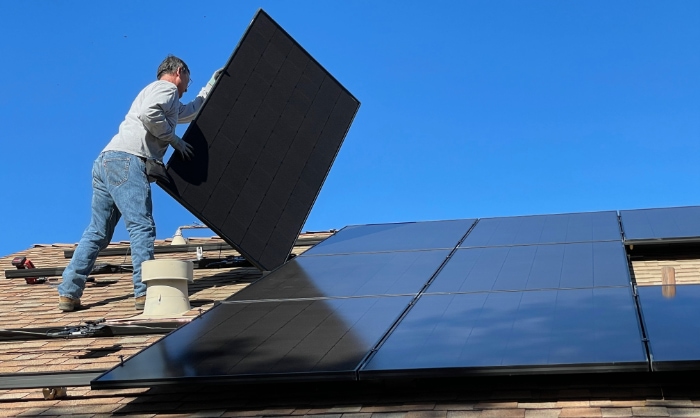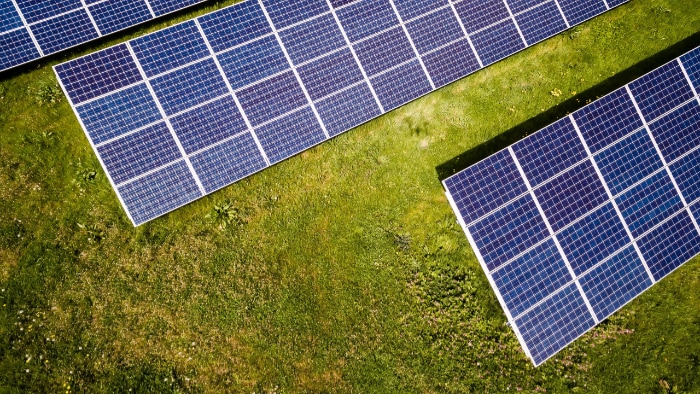The Price of Solar Panels: Why They Aren't Cheap

Solar energy has captivated the imagination of environmentalists, policymakers, and homeowners alike as a potent solution for reducing carbon footprints and tackling climate change. Yet, for many, there's a glaring discrepancy that's hard to ignore: Solar energy is essentially free and abundant, but the technology to harness it—solar panels—often comes with a hefty price tag. Why is this the case?
The Complexity of Solar Panel Manufacturing
Solar panels may seem like simple glass sheets that soak up sunlight, but their inner workings are a marvel of engineering and materials science.
Raw Materials and Their Sourcing
One of the primary factors that make solar panels expensive is the quality of materials used. The core component of most solar panels is crystalline silicon, which must be highly purified for maximum efficiency.
Other materials, such as metals like silver and aluminum, are also used in the construction of solar panels. The sourcing and refining of these raw materials contribute to the overall cost.
High-grade silicon and metals need specialized extraction and purification methods, often involving labor-intensive or energy-intensive processes that add to the expense.
Advanced Manufacturing Techniques
Once the raw materials are sourced and refined, they undergo advanced manufacturing techniques to be converted into a functional solar panel. Techniques such as Chemical Vapor Deposition (CVD) and screen printing are employed to create the semiconductor layers and establish electrical connections.
These methods are complex and require state-of-the-art machinery, operated by skilled technicians. Thus, the manufacturing stage involves both high capital investment in machinery and ongoing operational costs for skilled labor and quality control.
Quality Control and Testing
A key step in the manufacturing process is quality control and testing. Each solar panel must meet strict performance and durability standards to ensure it functions efficiently over its lifespan, which can be up to 25 years or more.
Rigorous tests for thermal cycling, humidity, and mechanical loads are performed. The objective is to ensure that each panel will not only be efficient but also durable, capable of withstanding extreme weather conditions.
The costs associated with this exhaustive testing process further drive up the price of the end product.
Energy-Intensive Production Process
The irony of solar panel manufacturing is that it is an energy-intensive process. From the melting of raw silicon to the operational energy needs of advanced machinery, considerable power is consumed.
While efforts are being made to make the production process more sustainable, the current energy requirements are a cost factor that cannot be overlooked.
Technological Innovation and its Cost
Solar panels may seem like a mature technology, but the industry is actually one of constant innovation. The quest for more efficient and cost-effective panels is an ongoing endeavor that involves substantial investment in research and development.
The Price of Research and Development
Innovation in the solar panel industry is not accidental; it's the result of meticulous research and development (R&D). High levels of investment are poured into R&D to discover new materials, improve efficiency, and extend the lifespan of solar panels.
As a result, each new generation of solar panels tends to be more efficient but also comes with R&D costs that are inevitably passed on to consumers.
Intellectual Property and Patents
Technological advancements often result in new patents, which have their own set of costs. Companies that invest in innovation usually secure patents to protect their discoveries.
Acquiring and maintaining a patent portfolio can be costly, and these costs are often reflected in the price of new solar panel technologies.
Skilled Labor and Specialized Knowledge
Technological innovation requires expertise, not just in research but also in execution. Specialized engineers, scientists, and even machine operators with specific skills are needed to bring innovations from the lab to the factory floor.
The salaries and training costs for this high-skilled labor force are additional factors that increase the cost of solar panels.
Adaptation and Upgradation Costs
New technologies often require changes in manufacturing processes. Adapting existing manufacturing lines or setting up new ones to accommodate innovations is resource-intensive.
The cost of machinery, along with retraining staff and potential downtime during transition phases, all add to the overall cost of producing newer, more advanced solar panels.
Installation and Infrastructure

While much focus is directed at the cost of solar panels themselves, the financial commitment extends beyond the hardware. Installing a solar panel system involves a range of additional expenses linked to infrastructure and labor.
The Ancillary Components
A functional solar energy system requires more than just solar panels. Other essential elements include inverters, which convert the direct current generated by the panels to alternating current usable by household appliances.
There are also mounting systems that secure the panels, as well as electrical conduits, switches, and connectors. These additional components are integral to the system's functionality and reliability, and they contribute to the total installation cost.
Labor Costs
The actual installation of a solar panel system is a labor-intensive process that requires skilled technicians. The labor cost involves not only the physical installation of the panels but also electrical wiring, configuration of inverters, and possible modifications to your home's existing electrical system to accommodate the new energy source.
The expertise required for a secure and efficient installation comes at a price, which varies depending on geographic location, the complexity of the installation, and local labor rates.
Site Assessment and Preparation
Before solar panels are even installed, a thorough site assessment is usually conducted. This includes measuring solar irradiance in the area, determining the optimal panel angle and position, and assessing any structural modifications needed for the building.
In many cases, roofs may need reinforcement to bear the weight of the panels, which further adds to the cost.
Logistics and Transportation
Solar panel systems are large and heavy, necessitating specialized transportation. This involves not only the panels but also the accompanying hardware like inverters and mounting systems.
The logistical aspects of getting these materials from the manufacturer to the installation site add another layer of expense to the overall cost.
Time Factor and Project Management
Installing a solar panel system is not an overnight task. It requires careful planning, scheduling, and project management to ensure that everything runs smoothly and on time.
While it might not be a direct out-of-pocket expense for the consumer, the time invested in project management has a cost implication, usually integrated into the overall service charge by the installation company.
Regulatory and Permitting Costs
Transitioning to solar energy isn't just a matter of purchasing panels and installing them on your rooftop. There's a complex web of regulations and permissions that must be adhered to, both to ensure safe installation and to comply with local and state laws.
The costs incurred in meeting these regulatory requirements can be substantial and are an integral part of what makes solar panels expensive for the end-user.
Local Building Permits
Most localities require building permits for the installation of solar panel systems. Obtaining a permit usually involves submitting detailed plans of the system layout, electrical schematics, and sometimes even structural assessments of the building where the installation is planned.
These permits come with fees, which vary by jurisdiction but nonetheless add to the overall cost.
Safety Inspections
After the solar panel system is installed, safety inspections are often mandatory. These inspections ensure that the installation meets all safety standards and building codes.
The cost for these inspections can vary widely depending on location and the complexity of the system. Some jurisdictions might require multiple inspections, each with its own associated cost.
Grid Connection and Net Metering
Connecting your solar panel system to the electrical grid is usually a regulated process that may require specialized equipment and additional inspections. If you plan to take advantage of net metering, where surplus energy is sold back to the grid, there may be additional metering costs and compliance requirements to fulfill.
Economies of Scale and Market Dynamics
Solar energy, like any industry, is governed by market dynamics and economies of scale. While the technology is increasingly being adopted worldwide, the manufacturing and distribution scale is still not as extensive as more established forms of energy production.
Manufacturing Scale and Production Costs
In industries where products are produced at a massive scale, costs per unit generally decrease, thanks to economies of scale. However, the solar panel industry is still in a stage of expansion and has not yet reached the scale where costs can dramatically plummet.
The relatively lower production volumes mean that fixed costs, such as machinery and labor, are divided among fewer units, resulting in a higher price tag per panel.
Competitive Landscape and Pricing
Competition tends to drive down prices, but the solar industry is still developing its competitive landscape. While more companies are entering the market, the relatively high barriers to entry, such as capital-intensive manufacturing processes, limit the number of players.
This reduced competition can maintain higher prices as firms are less pressured to cut costs to gain market share.
Supply Chain Complexities
The production of solar panels involves a multi-step, global supply chain that includes raw material extraction, refining, manufacturing, and distribution. Each of these steps adds to the cost, and any disruptions in the supply chain, such as trade tariffs or geopolitical issues, can cause prices to spike.
These complexities and vulnerabilities further contribute to the overall cost of solar panels.
Market Demand and Subsidies
Another factor that influences the cost of solar panels is the level of market demand, which is closely tied to government policies and subsidies. In regions where solar energy is heavily subsidized, demand tends to be higher, potentially reducing costs through increased production.
However, in places where subsidies are limited or non-existent, lower demand can keep prices elevated.
Commodity Prices
Raw materials like silicon, silver, and aluminum are essential in the manufacture of solar panels. Fluctuations in the prices of these commodities can have a direct impact on production costs.
Given that these materials are traded on global markets, various external factors like economic conditions, supply constraints, or increased demand in other industries can influence their price and, by extension, the cost of solar panels.
Conclusion
Taking all these factors into account, it becomes clear that the high cost of solar panels is influenced by a myriad of considerations. From the intricate procedures involved in manufacturing to the challenges posed by technological innovation, each step in the solar panel lifecycle contributes to its overall expense.
Regulatory hurdles, though essential for safety and quality, add another layer of financial commitment for homeowners. Furthermore, market dynamics, including economies of scale and supply chain complexities, shape the pricing framework within which solar panels operate.
Gaining a comprehensive understanding of these factors can demystify the costs associated with transitioning to this renewable energy source.


